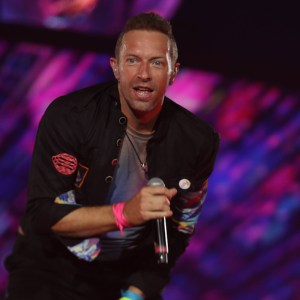On April 30, 1978, 100,000 people marched six miles from Trafalgar Square in London, England, towards the East End of the city for a concert in Victoria Park. Punk’s X-Ray Spex and Shamp 69 frontman Jimmy Pursey, along with Patrik Fitzgerald, reggae band Steel Pulse, rockers the Tom Robinson Band, and the main act of the day, The Clash all convened for the one-day act of musical activism Rock Against Racism (RAR).
Videos by American Songwriter
The RAR show was part of a greater grassroots movement that was initiated two years earlier and was started by a collective of musicians and other artists crossing all genres of music, from rock, pop, ska, reggae, jazz, punk, and more, as a united front against the heightened systematic and cultural racism penetrating the United Kingdom.
The RAR movement was in response to the increasing support for the far-right National Front which had helped propagate anti-immigration sentiments, which spread into racial attacks on the streets throughout the United Kingdom. It was initially conceived by jazz bandleader Red Saunders, along with Jo Wreford and Pete Bruno—who were also members of the agitprop theater group Kartoon Klowns—and typographer Roger Huddle.
[RELATED: 3 Songs You Didn’t Know The Clash’s Joe Strummer Wrote for Other Artists]
At the time, it didn’t help that Eric Clapton had reportedly called for a “white” Britain at his concert at the Odeon Birmingham during the height of the conflict. “Stop Britain from becoming a black colony,” Clapton reportedly ranted, during a time when his cover of Bob Marley’s “I Shot the Sheriff” went to No. 1 on the Billboard Hot 100. “Get the foreigners out. England is for white people, man. We are a white country.”
Rock Against Racism was officially born when Saunders and the team responded to Clapton’s stance in a collective letter published in UK music magazine NME. The letter read:
When we read about Eric Clapton’s Birmingham concert when he urged support for Enoch Powell, we nearly puked.
What’s going on Eric? You’ve got a touch of brain damage. So you are going to stand up for us and you think we are being colonized by black people. Own up. Half your music is black. You are rock music’s biggest colonist. You’ve got to fight the racist poison. Otherwise, you degenerate into the sewer with the rats and all the money men who’ve ripped off rock culture with their [checkbooks] and plastic crap.
Rock was and can still be a real progressive culture, not a package mail-order stick-on nightmare of mediocre garbage.
Keep the faith, black and white unite and fight.
We want to organize a rank-and-file movement against the racist poison in rock music. We urge support. All those interested please write to Rock Against Racism, Box M, 6 Cottons Gardens, London, E2 8DN
P.S. Who shot the Sheriff, Eric? It sure as hell wasn’t you!
The letter was signed by Saunders, Bruno, Wreford, and Huddle, along with Dave Courts, Angela Follett, and Mike Stadler, and dated September 1976.
Clapton later denounced his comments and said he was embarrassed by his actions and words during this time. “I sabotaged everything I got involved with,” revealed Clapton in 2018. “I was so ashamed of who I was, a kind of semi-racist, which didn’t make sense. Half of my friends were black, I dated a black woman, and I championed black music.”
[RELATED: Paul Simonon and Galen Ayers Brave Uncharted Sounds on Collaborative Debut]
The Rise of RAR
The first RAR gig took place in November of 1976 at the Princess Alice pub in the East End of London with performers Matumbi and Carol Grimes. From there, the activist movement grew into more artistic demonstrations against the right between 1976 and 1982 with performances, carnivals, and other events throughout the country.
Globally, additional RAR factions started up in France, Norway, Sweden, Belgium, Germany, Holland, Australia, and South Africa.
By 1978, the RAR wanted something bigger and started producing the one-day concert.
The Clash
On April 30, the main act was The Clash, who fired through an 11-song set opening on “Complete Control” and anthem of urban alienation “London’s Burning” through “(White Man) In Hammersmith Palais” and their Junior Murvin cover “Police and Thieves.”
Then the plug was pulled on their emotionally charged performance, presumably ending the show. The plug may have been pulled since the band went over their scheduled time.
The band called out the offender and when bassist Paul Simonon plugged back in, the band roared through their anti-oppressive “White Riot,” joined by Sham 69’s Pursey.
‘White Riot’
In 2019, director Rubika Shah released her film White Riot, chronicling the Rock Against Racism movement. The film blends an archive of footage showcasing the anti-immigrant sentiments and hostility within the streets at the time.
“We peeled away the Union Jack to reveal the swastika,” said Saunders. “The campaign grew from Hoxton fanzine roots to 1978’s huge antifascist carnival in Victoria Park, featuring X-Ray Spex, Steel Pulse, and of course The Clash, whose rock star charisma and gale-force conviction took RAR’s message to the masses.”
The Clash’s Rock Against Racism Setlist, April 30, 1978:
- “Complete Control”
- “London’s Burning”
- “Clash City Rockers”
- “Tommy Gun”
- “(White Man) In Hammersmith Palais”
- “Last Gang in Town”
- “Police and Thieves”
- “English Civil War”
- “Guns on the Roof”
- “Capital Radio”
- “White Riot”
Photo: Steve Rapport/Getty Images
